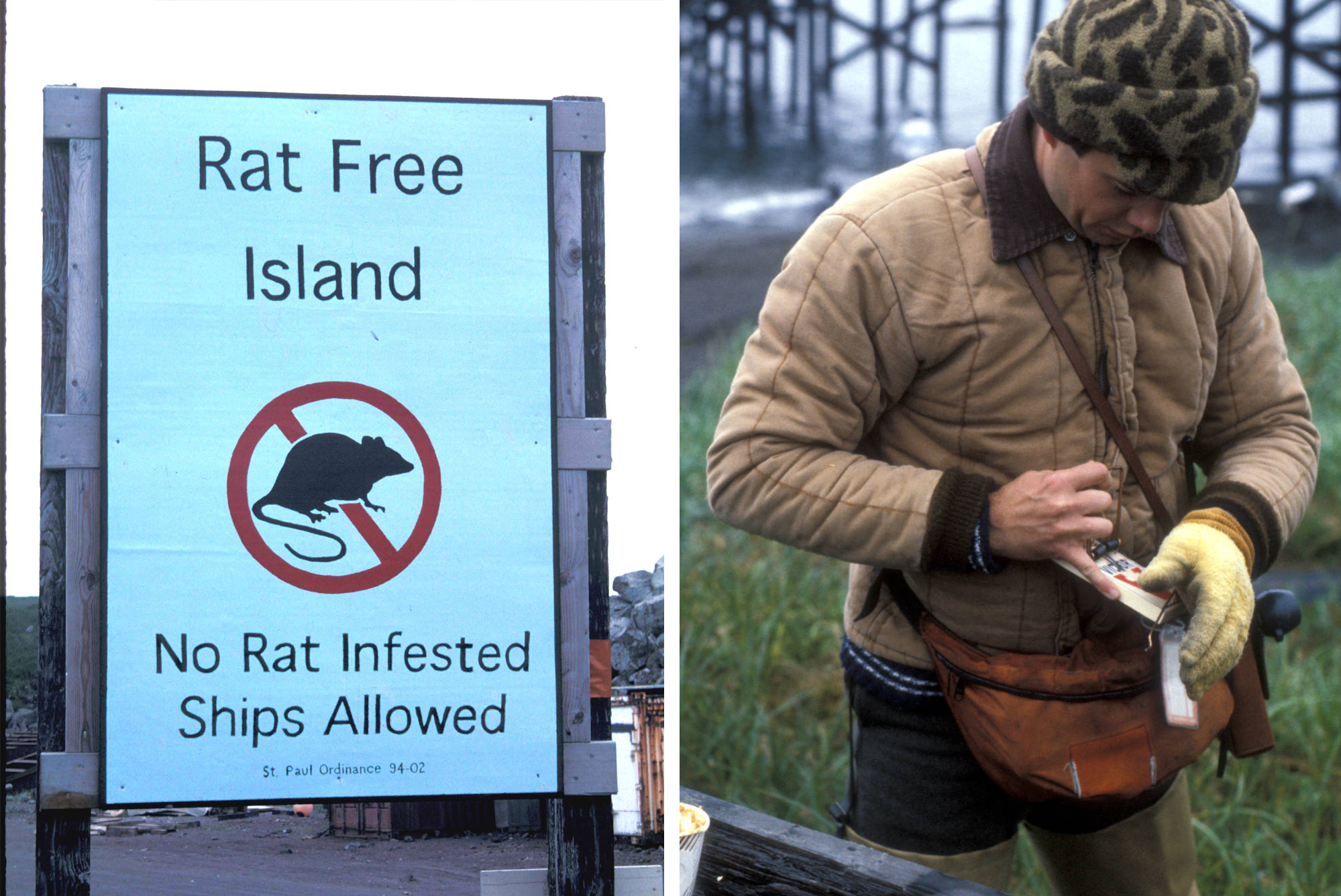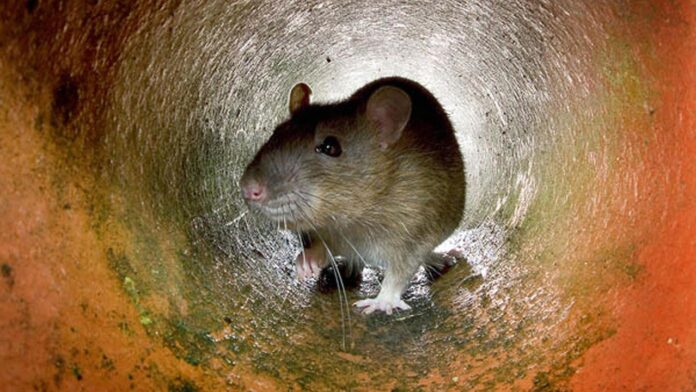The Silent Invasion: Protecting St. Paul Island’s Fragile Ecosystem from the Threat of Rats
In the remote stretches of the Bering Sea, St. Paul Island—a small, rugged outpost with only 350 residents—faces a looming environmental catastrophe. Dubbed the “Galapagos of the North” due to its extraordinary biodiversity, the island is renowned for its thriving seabird population and pristine landscapes. Yet, the sighting of a single rat in June has cast a shadow over the island’s delicate ecosystem. The mere possibility of rats establishing a presence on the island has triggered widespread alarm among the residents, conservationists, and wildlife officials, all aware of the devastating consequences this invasive species could unleash.

St. Paul Island: A Natural Paradise at Risk
St. Paul Island is part of the Pribilof Islands, a remote archipelago that has garnered international recognition as a vital sanctuary for seabirds. The island’s untamed beauty, combined with the abundance of wildlife, makes it a premier destination for birdwatchers and conservationists alike. Thousands of seabirds, including puffins, auklets, and kittiwakes, nest on the island’s steep cliffs and lush meadows. This spectacular wildlife draws visitors from around the world, eager to experience an ecosystem untouched by modern development.
However, this unique balance is precarious. Introduced predators, such as rats, which do not naturally inhabit the island, can swiftly disrupt the ecosystem. “It’s the abundance of wildlife that makes St. Paul special,” said Donald Lyons, director of conservation science with the National Audubon Society’s Seabird Institute. “St. Paul is a place where you can truly witness the spectacle of nature.” Lyons’ words echo the concerns of many in the community who understand how even the smallest disturbance could alter the island’s ecosystem.

The Threat of Rats: A Global Ecological Nightmare
The danger rats pose to islands like St. Paul is well-documented. On numerous remote islands worldwide, rats have decimated seabird populations by preying on eggs, chicks, and even adult birds in extreme cases. These voracious creatures reproduce rapidly and spread across fragile environments, leaving devastation in their wake. In Alaska, as well as globally, rats have been responsible for driving several bird species to extinction or near-extinction.
Lauren Divine, the director of the Aleut Community of St. Paul Island’s ecosystem conservation office, is acutely aware of this threat. “We’ve seen this happen in Alaska and globally—rats decimate seabird colonies. This is not a threat the community takes lightly,” Divine explained. The fear is not unwarranted; if rats were to establish themselves on St. Paul Island, it could take years, possibly decades, and millions of dollars to eradicate them. Even if the rats were successfully removed, the recovery of the island’s seabird populations would likely take even longer.
The impact of rats extends beyond seabirds. Rats are opportunistic feeders, and they can destroy entire food webs, targeting plants, insects, and small mammals as well. Their presence could irreparably harm the island’s entire ecosystem, turning it into a shadow of the vibrant paradise it once was. For St. Paul Island’s residents and conservationists, the urgency of preventing this potential invasion cannot be overstated.

The Ongoing Search: A Battle Against Tim
Since June, when a resident first reported spotting a rat, wildlife officials have been on high alert, launching an exhaustive search for any signs of the rodent. Over three months have passed, and despite the use of traps, peanut butter bait, wax chew blocks, and trail cameras, no conclusive evidence of the rat has been found. These wax chew blocks are designed to leave behind droppings that glow under black light or show rat bite marks, but none have produced results so far.
Divine has likened the search to “looking for a needle in a haystack when you don’t know if the needle even exists.” The frustration of not knowing whether a rat is lurking in the shadows or if it was a false alarm hangs over the island’s community. St. Paul Island has maintained strict rat control measures for years, with a border patrol system at its airport and waterfront areas to prevent rodents from hitching rides on planes or boats. Yet, these defenses are not impenetrable. In 2018, a rat managed to evade capture for 10 months before it was eventually found dead.
While the current search has yet to yield concrete results, it serves as a sobering reminder of the island’s vulnerability. The absence of evidence does not necessarily mean the threat is gone. If even one rat has infiltrated the island, the consequences could be disastrous, prompting the need for continued vigilance.
Staying Vigilant: The Fight to Preserve a Unique Ecosystem
For St. Paul Island’s residents and conservationists, the fight is not over. The mere possibility of a rat sighting has galvanized the community to protect their home and its wildlife. The island’s ecosystem, balanced delicately over centuries, must remain free from invasive predators if it is to survive and thrive. “This is not just about protecting our birds; it’s about protecting the soul of the island,” one resident remarked. For the people of St. Paul, the island represents more than just a home—it is a living reminder of nature’s resilience and beauty.
As the search for the elusive rat continues, the community remains committed to safeguarding their island. St. Paul Island’s story is one of both vulnerability and strength, a place where the wonders of nature are fiercely protected from the encroaching dangers of modern times. The hope is that this latest scare will end as the 2018 incident did, with no significant harm done to the ecosystem. However, the stakes are too high to relax now. The future of St. Paul’s birds and wildlife depends on unwavering vigilance, cooperation, and the collective effort to keep its shores rat-free.

The Silent Invasion: Protecting St. Paul Island’s Fragile Ecosystem from the Threat of Rats
In the remote stretches of the Bering Sea, St. Paul Island—a small, rugged outpost with only 350 residents—faces a looming environmental catastrophe. Dubbed the “Galapagos of the North” due to its extraordinary biodiversity, the island is renowned for its thriving seabird population and pristine landscapes. Yet, the sighting of a single rat in June has cast a shadow over the island’s delicate ecosystem. The mere possibility of rats establishing a presence on the island has triggered widespread alarm among the residents, conservationists, and wildlife officials, all aware of the devastating consequences this invasive species could unleash.
St. Paul Island: A Natural Paradise at Risk
St. Paul Island is part of the Pribilof Islands, a remote archipelago that has garnered international recognition as a vital sanctuary for seabirds. The island’s untamed beauty, combined with the abundance of wildlife, makes it a premier destination for birdwatchers and conservationists alike. Thousands of seabirds, including puffins, auklets, and kittiwakes, nest on the island’s steep cliffs and lush meadows. This spectacular wildlife draws visitors from around the world, eager to experience an ecosystem untouched by modern development.
However, this unique balance is precarious. Introduced predators, such as rats, which do not naturally inhabit the island, can swiftly disrupt the ecosystem. “It’s the abundance of wildlife that makes St. Paul special,” said Donald Lyons, director of conservation science with the National Audubon Society’s Seabird Institute. “St. Paul is a place where you can truly witness the spectacle of nature.” Lyons’ words echo the concerns of many in the community who understand how even the smallest disturbance could alter the island’s ecosystem.
The Threat of Rats: A Global Ecological Nightmare
The danger rats pose to islands like St. Paul is well-documented. On numerous remote islands worldwide, rats have decimated seabird populations by preying on eggs, chicks, and even adult birds in extreme cases. These voracious creatures reproduce rapidly and spread across fragile environments, leaving devastation in their wake. In Alaska, as well as globally, rats have been responsible for driving several bird species to extinction or near-extinction.
Lauren Divine, the director of the Aleut Community of St. Paul Island’s ecosystem conservation office, is acutely aware of this threat. “We’ve seen this happen in Alaska and globally—rats decimate seabird colonies. This is not a threat the community takes lightly,” Divine explained. The fear is not unwarranted; if rats were to establish themselves on St. Paul Island, it could take years, possibly decades, and millions of dollars to eradicate them. Even if the rats were successfully removed, the recovery of the island’s seabird populations would likely take even longer.
The impact of rats extends beyond seabirds. Rats are opportunistic feeders, and they can destroy entire food webs, targeting plants, insects, and small mammals as well. Their presence could irreparably harm the island’s entire ecosystem, turning it into a shadow of the vibrant paradise it once was. For St. Paul Island’s residents and conservationists, the urgency of preventing this potential invasion cannot be overstated.
The Ongoing Search: A Battle Against Time
Since June, when a resident first reported spotting a rat, wildlife officials have been on high alert, launching an exhaustive search for any signs of the rodent. Over three months have passed, and despite the use of traps, peanut butter bait, wax chew blocks, and trail cameras, no conclusive evidence of the rat has been found. These wax chew blocks are designed to leave behind droppings that glow under black light or show rat bite marks, but none have produced results so far.
Divine has likened the search to “looking for a needle in a haystack when you don’t know if the needle even exists.” The frustration of not knowing whether a rat is lurking in the shadows or if it was a false alarm hangs over the island’s community. St. Paul Island has maintained strict rat control measures for years, with a border patrol system at its airport and waterfront areas to prevent rodents from hitching rides on planes or boats. Yet, these defenses are not impenetrable. In 2018, a rat managed to evade capture for 10 months before it was eventually found dead.
While the current search has yet to yield concrete results, it serves as a sobering reminder of the island’s vulnerability. The absence of evidence does not necessarily mean the threat is gone. If even one rat has infiltrated the island, the consequences could be disastrous, prompting the need for continued vigilance.
Staying Vigilant: The Fight to Preserve a Unique Ecosystem
For St. Paul Island’s residents and conservationists, the fight is not over. The mere possibility of a rat sighting has galvanized the community to protect their home and its wildlife. The island’s ecosystem, balanced delicately over centuries, must remain free from invasive predators if it is to survive and thrive. “This is not just about protecting our birds; it’s about protecting the soul of the island,” one resident remarked. For the people of St. Paul, the island represents more than just a home—it is a living reminder of nature’s resilience and beauty.
As the search for the elusive rat continues, the community remains committed to safeguarding their island. St. Paul Island’s story is one of both vulnerability and strength, a place where the wonders of nature are fiercely protected from the encroaching dangers of modern times. The hope is that this latest scare will end as the 2018 incident did, with no significant harm done to the ecosystem. However, the stakes are too high to relax now. The future of St. Paul’s birds and wildlife depends on unwavering vigilance, cooperation, and the collective effort to keep its shores rat-free.

